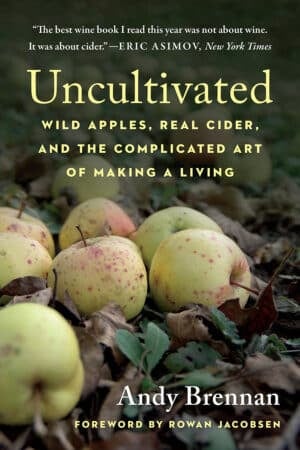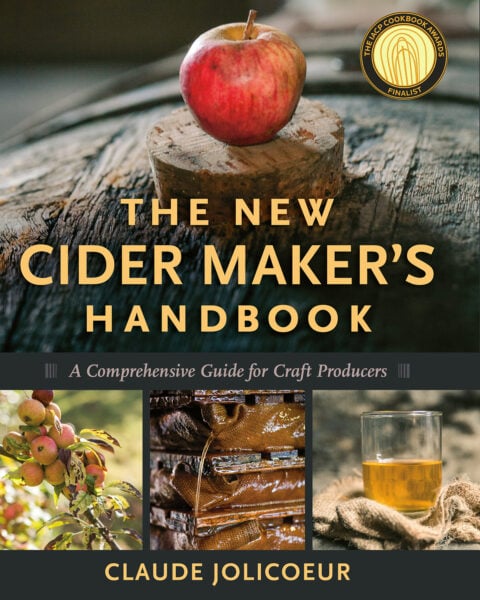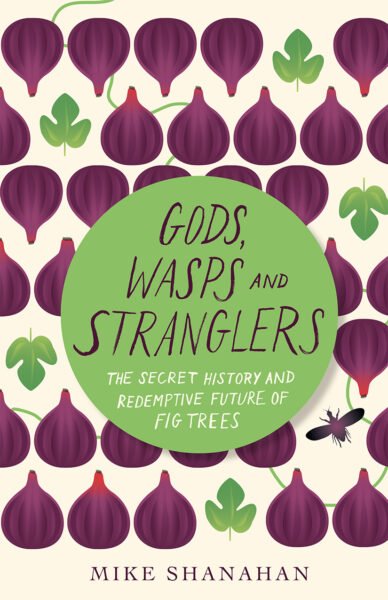The Apple: America’s Fruit
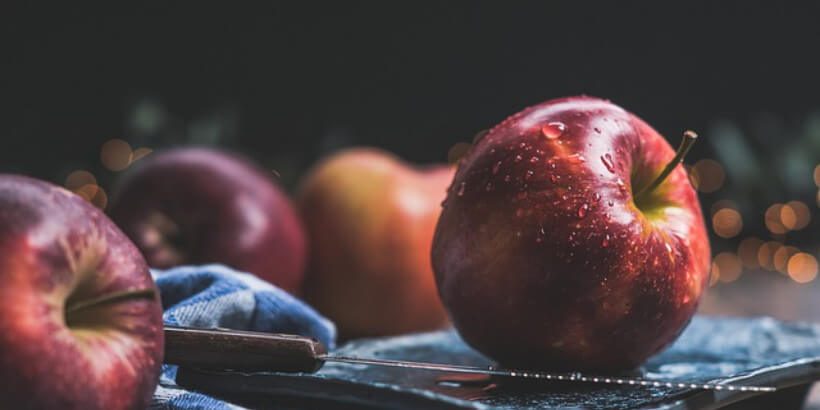
Did you know that the apple traveled to North America the same way the Pilgrims did in the 1600s? Though apple trees are abundant all across the country, they aren’t native to these lands. Apples have a fascinating and complex history that lead them to become an American symbol.
The following is an excerpt from Uncultivated by Andy Brennan. It has been adapted for the web.
Prefer audio?
Listen to the excerpt below from the audiobook of Uncultivated.
Many people don’t know this, but the common apple tree is not native to the northeastern United States, where it was first declared “America’s fruit.”
This surprises anyone who has driven these country roads, because there are so many uncultivated trees visible without even leaving the car. In fact the fruit is so perfectly suited for our cold climate that I once heard a friend compare the wild apples of Maine to the abundance of tropical fruit popping out of the vegetation along roadways where she grew up in Kenya.
This scene of natural abundance wasn’t always the case, not in the Northeast, not before the mid-1600s. If any apple tree grew here prior (though it’s not assumed they did), it would have been the small and mealy Malus coronaria, a crab apple that by the 1800s was reported growing only west of the Northeast colonies, over the Appalachians. M. domestica, the larger apple we’re all familiar with, is an immigrant just like us. It is part of the whole of Western culture that arrived by boat in the 1620s, and it has evolved here in tandem with Western culture ever since.
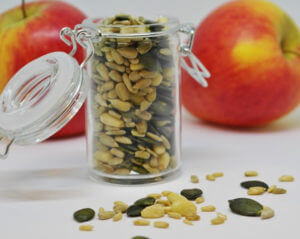 However, the Pilgrims did not bring live trees across the Atlantic; they brought only apple seeds with them. They planted them en masse, just as Johnny Appleseed would later do to create seedling trees. Trees from seed—pippins—are very different from modern apple trees in that their genetic variety is unique (not cloned, as with grafted trees). Every apple has five seed cells in its core. Not only will each of those seeds develop into a unique apple tree (uniquely different from its parent), but each seed will also develop a tree distinct from the ones produced from the other seeds in the core. Loaded with thousands and thousands of apple seeds, a single tree can launch tens of thousands of potentially new varieties and test the environment where those seeds end up. With the right combination of genetics and environmental suitability, one of those seedlings is bound to survive and find itself perfectly suited for a particular location.
However, the Pilgrims did not bring live trees across the Atlantic; they brought only apple seeds with them. They planted them en masse, just as Johnny Appleseed would later do to create seedling trees. Trees from seed—pippins—are very different from modern apple trees in that their genetic variety is unique (not cloned, as with grafted trees). Every apple has five seed cells in its core. Not only will each of those seeds develop into a unique apple tree (uniquely different from its parent), but each seed will also develop a tree distinct from the ones produced from the other seeds in the core. Loaded with thousands and thousands of apple seeds, a single tree can launch tens of thousands of potentially new varieties and test the environment where those seeds end up. With the right combination of genetics and environmental suitability, one of those seedlings is bound to survive and find itself perfectly suited for a particular location.
But did the Pilgrims feel the same way about themselves in their new location? This is not an unrelated question. I try to imagine what went on in the heads of those religious separatists as they crammed onto wooden ships and set sail for a two-month voyage across the ocean for the New World: It must have been like boarding a spacecraft with a one-way ticket to Mars. And things didn’t get any easier once they “safely landed,” either. In fact, those first few years the settlers had to adjust to brutal cold and snow unlike anything they were used to in temperate Europe. In addition, the terrain and the soil were much rockier and more difficult to cultivate than what they had hoped for. Things were hard. There was no way around it.
A religious people, they might have read this as God’s rebuke. They could have extrapolated that the difficulties were the Lord’s way of telling them that the elements of Western culture were not suitable for this new land. Such thoughts would surely creep in and affect morale, and as we all know, sometimes morale is the only thing to carry us through trying times. Beaten up by the weather, fighting rock and snow, as well as frightened of “savage” attacks, the settlers needed a sign for inspiration. That sign eventually came in the form of an apple.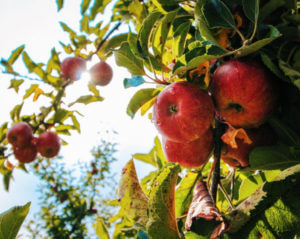
Simultaneous to the struggles of the Pilgrims, apple trees were also trying to define themselves in the New World. While it was unnoticeable at first, the settlers soon realized that something interesting was occurring with these trees. Not only did they seem okay with the harsher temperatures and rocky soils, but after a decade or two growing to fruit-bearing age, proof eventually came that the trees were more suitable here than in old England. The apple tree, having worked its roots around heavier, rocky soil, produced a fruit with superior taste-intensity, becoming the first element of Western culture to surpass Europe’s nurturing. Finally, empirical and divine proof that Western civilization could succeed in North America!
The goal was clear: Follow the apple.
The success of the tree in the Northeast is not surprising to us now that we know more about the extended history of Malus domestica. Pomologists (those who study the science of apples) currently believe they originated in Central Asia in the foothills of the Tien Shan Mountains where the climate, latitude, and terrain more closely resemble the extremes of New England than they do old England. But having the fruit do better here became America’s original boasting point. It became known as America’s fruit, sort of like a colonial In your face!
Over time American apples only became more highly esteemed, and even as war was brewing with the mother country, apples were being exported back to England. Their praise was sung by famous men and women on both sides of the Atlantic. And by the end of the nineteenth century, American apple varieties were being grown worldwide. Even today American cultivars (short for “cultivated varieties”), including some of those early heirloom varieties, disproportionately dominate global markets. The apple is unquestionably America’s fruit—that is, if America starts with Western culture.
Recommended Reads
Recent Articles
Garlic mustard: while known as “invasive,” this plant can be consumed in its entirety and has great nutritional value. Plus, the garlic-flavor is a perfect addition to any recipe that calls for mustard! The following are excerpts from Beyond the War on Invasive Species by Tao Orion and The Wild Wisdom of Weeds by Katrina…
Read MoreOh, honeysuckle…how we love thee. If only there was a way to capture the sweet essence of this plant so we could enjoy it more than just in passing. Luckily, foraging and some preparation can help make that happen! Here’s a springtime recipe that tastes exactly like honeysuckle smells. The following excerpt is from Forage,…
Read MoreIntroducing…your new favorite brunch dish! This whole broccoli frittata is packed with fresh, wildcrafted flavors that are bound to help you start your day off on the right foot. The following is an excerpt from The Forager Chef’s Book of Flora by Alan Bergo. It has been adapted for the web. RECIPE: Whole Broccoli Frittata…
Read MoreWondering where to forage for greens this spring? Look no further than hedges, which serve as natural havens for wild greens and herbs! The following is an excerpt from Hedgelands by Christopher Hart. It has been adapted for the web. Food from Hedges: Salads and Greens Let’s start by looking at all the wild foods…
Read MoreThere’s a whole new world out there when it comes to koji. It doesn’t matter if you’re making bread, cheese, or ice cream, koji helps you pump up the flavor! Growing Koji in Your Own Kitchen Koji, the microbe behind the delicious, umami flavors of soy sauce, miso, fermented bean sauce, and so many of…
Read More

